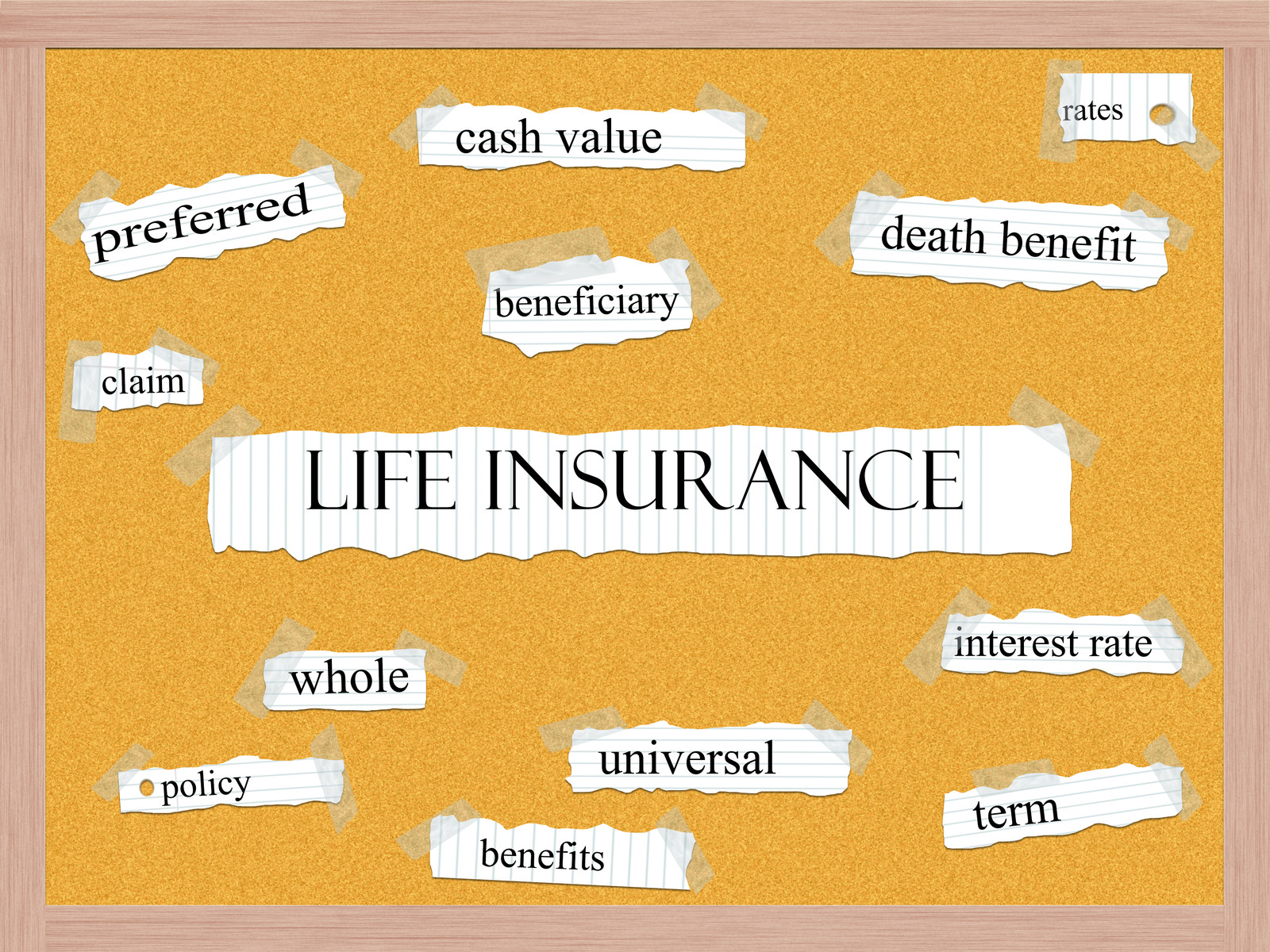 |
||
 |
||
|
The Best Way to Buy Sell or Replace Life Insurance
|
||
 |
||
 |
||
|
The
Best Way to Buy, Sell, or
Replace Your Life Insurance
(Determine if you need life insurance and what to do with old policies)
Written by Financial Educators
Provided to you by
John C. Gilbert
MBA
1195381
Why Would a Retiree Own Life Insurance?

 Traditionally, life insurance is purchased during your working years to replace
your income for your family in case you died. But if you are retired,
do you still need life insurance? There may be three reasons to own a
policy:
Traditionally, life insurance is purchased during your working years to replace
your income for your family in case you died. But if you are retired,
do you still need life insurance? There may be three reasons to own a
policy:
1. Because many couples are dependent upon two social security checks or two pension checks, when one spouse passes away, the other spouse finds that their income falls, but many of the expenses and lifestyle requirements remain. The inexpensive way to protect against this is to own term life insurance.
Recently, I obtained a $200,000 policy for a 70-year-old male for a premium of $137 monthly.1 If he predeceases his wife (women statistically outlive men by five years)2, his wife will receive this $200,000. Invested for income at 6% (a hypothetical rate), this would produce $12,000 annually of income to offset the loss of his social security check. If used up over her lifetime, (assumed to be another 5 years), the principal plus interest would generate over $47,000 annually for the wife.
2. For estate planning reasons: Let's say you have developed your net worth by owning real property. One son takes an active interest and manages most of your property. The other son lives
2,000 miles away, travels around the globe as an archeologist, and
has no interest in the properties. Maybe
you want to leave the properties to the son who cares for them, but are concerned
about what to leave the other son. Easy answer, buy life insurance and
name the archeologist as the beneficiary.
Or
if your estate is over $12.06 million (2022), the excess is subject to estate
taxes at hefty rates (at 40% for years 2022 to 2025, indexed annually for
inflation). A simple, often inexpensive way to pay the tax without taking money
from the beneficiaries is to have a life insurance policy to pay the tax. 3.
To make the most of your IRA or retirement plan: Say you are age 70 and it's
time to start taking mandatory distributions from your IRA. Let's assume that
the distributions are a hypothetical $15,000 annually ($10,000 remaining after
a hypothetical 33% federal and state income tax). If you invested that $10,000
at a hypothetical 6% (4% net after federal and state income tax of 33%), you
would accumulate $298,400 over 20 years. Alternatively, take that same $10,000
annually and buy life insurance, and upon death your heirs will receive $370,0003,
tax free. You can do the same if you have a qualified retirement plan, but
the numbers are even better as you can purchase the policy inside the plan
with pre-tax dollars. As you see, there are powerful ways to use
life insurance for retirement and estate planning purposes.
Retirees May Need More Life If you died today, your spouse would still be faced with daily living expenses—for
10, 20, or even 30 years. Without life insurance, would he or she be able to
pay off your obligations, maintain the lifestyle you have both worked so hard
to achieve, and pass on something to your children and grandchildren? For
example, depending on the size of your estate, your heirs could be hit with
a large estate tax bill after you die�(the top estate tax rate is 40% for 2022
- 2025). Tax would be payable on your non-exempt estate, and could be more
than shown above, depending on your State's inheritance taxes. Enter life insurance.
Life insurance proceeds are generally free of income tax, and can be set up
so they avoid probate. As a result, your life insurance policy can potentially
pay out immediately upon your death, allowing your heirs to pay those estate
taxes, as well as funeral costs and other debts, without having to liquidate
other assets. And if your life insurance policy is properly structured, the
proceeds from it will not add to your estate tax liability. Moreover, if your circumstances change and
you no longer have anyone who would need the proceeds of a life insurance policy,
you may be able to surrender the policy and supplement your retirement income
with the funds that have accumulated in the policy's “cash value account.” So, how much life insurance do you need as
a retiree? That depends on how much your family will need to meet general obligations
upon your death (such as medical costs, funeral expenses, and estate settlement
bills) as well as how much future income your family will need to sustain them.
The latter is tricky to calculate, because it involves calculating the present
day value of future needed cash flow streams.
Use Those Old Life Insurance The IRS will allow you to make tax-free transfers
of life insurance policies into an annuity. You may think that there could
not be much of a benefit if there's not much cash value in the policies.
But for tax purposes, the amount transferred is actually your cost basis less
dividends and cash value. For example, let's say that you are considering
investing $100,000 in an annuity, and you own a life insurance policy that
you have paid $25,000 into over the years—that now has a $2,000 cash value.
You want the annuity to provide income sometime in the future and no longer
need the life insurance. A 1035 exchange on the life insurance to the
annuity could increase the annuity's
cost basis from $100,000 to $123,000 ($100,000 + $25,000 - $2,000). This means
that when you or your beneficiaries make withdrawals, an additional $23,000
of growth will come out tax-free from the annuity. Other ways to use your life insurance for
investment purposes Through a series of withdrawals or loans, cash value life insurance policies
can often provide tax-free money. This could be as a lump sum or systematic
payments to accommodate your needs. Then when you die, your beneficiaries will
receive the greater of the remaining cash value or the death benefit, income
tax-free. Also you might want to exchange your policy
for one with a lower death benefit. This could be a tax-free transaction, and
you could end up with a higher income—since the cost of the insurance within
the new policy may possibly be less.
Life Insurance Trusts - Reduce Federal Estate Taxes
and Provide for Your Family's Future When You Are Gone
A
trust is essentially a legal arrangement where property control is transferred
to another party (known as a trustee) for the benefit of another person or
entity, who is commonly known as the beneficiary. A life insurance trust is
a special type of trust that holds title to a life insurance policy. In many
cases, the primary purpose of this trust is to help certain taxpayers reduce
their federal estate tax burdens. While few estates will be subject to federal
estate tax, state inheritance taxes will be more common (Federal estate taxes
are applied to estates exceeding $12.06 million per individual (2023-2025,
indexed for inflation annually). In the absence of a trust, any
insurance policy that you own personally is included in your gross estate.
As a result of this, the death benefits from the policy would be included in
your estate and could be subject to federal estate taxes. On the other hand,
by purchasing the life insurance policy through a trust, you can keep the death
benefits out of your estate. This
can potentially result in a significant tax savings. Notwithstanding the tax
benefits of these arrangements, these trusts can also facilitate your estate
planning in other ways too. For example, you might decide that the needs of
your beneficiaries are better served by allowing an experienced trustee to
manage the policy proceeds in the trust. In this situation, your trust's
beneficiaries can receive the income generated from the proceeds when the trust
receives it. Furthermore, the trust can reinvest the proceeds on behalf of
your beneficiaries. Unfortunately, not everyone is equipped to make sound investment
decisions, especially those who are minors, disabled, or are not otherwise
capable of managing money. These beneficiaries in particular would benefit
from this sort of arrangement. Of course, the trust can also be structured
in a manner that requires the policy proceeds to be distributed to the beneficiaries
immediately, or when they reach a certain prescribed age. Notwithstanding the
potential planning benefits, a few cautionary planning points must be observed.
First, to prevent the policy proceeds from being placed in your estate, the
arrangement must be structured as an irrevocable trust. This means that the
trust cannot be revoked once it is funded. A small exception, however, might
apply in the event that all beneficiaries are willing to agree to the revocation. Also, the trust grantor (i.e., the person who establishes the trust) cannot
retain any incidents of ownership in the policy. This means that the grantor
cannot change the policy's beneficiary. It is also commonly understood that
the grantor should not serve as the trustee. Additionally, if the grantor borrows
against the policy, then the grantor is considered the owner of the policy
for federal estate tax purposes. As a result, the proceeds from the policy
will be included in the grantor's estate and could be subject to the
federal estate taxes. Most of us realize that life insurance can be a great
way to provide for our loved ones' future when we are gone. Additionally, by
taking an additional planning step in having the policy owned by a trust, you
are potentially maximizing all the benefits that a life insurance policy offers.
However, you will need a trusted legal professional to make sure it is done
right! Contact our office for a referral to an appropriate attorney. Note:
Life insurance qualification is subject to medical underwriting guidelines,
which are based, among other things, upon the insured's age and health.
Insurance premiums, which represent the cost of the policy, can also vary depending
upon the insured's age, health, and desired coverage limits. Sales commissions
surrender fees and other policy charges can also apply to purchases of life
insurance. Insurance guarantees are also subject to the claims-paying ability
of the issuing company.
Retirement Reasons for Updating But, unfortunately, these statistics also imply
that some will die early, with a probability that increases faster after age
55. If so, will a premature
and unexpected death of you or your spouse leave the other financially strapped
for rest of her (or his) life? Beyond insuring for you and your spouse's
legacy to your children and final estate costs, there are five reasons to update
your life insurance now to ensure your spouse the relaxing retirement that
you are in the processes of creating. You may consider more life insurance… To cover an adult child that is now evidently having a hard time in life.
This may be due to a mental or physical disability or a short coming that
has appeared in his adult life. To cover the Social Security blackout period for your spouse. Social Security
pays nothing from when the youngest child leaves high school until the
surviving spouse applies for benefits based on the deceased spouse's record (minimum
age for eligibility is 60). You anticipated qualifying for a certain amount
of social security benefits as part of your retirement income, but there
will be no help during this “blackout period.” To offset the reduced benefits that you anticipated from Social Security
and saving plans. As the main breadwinner with some high income years still
left, you plan to contribute heavily to your qualified retirement plans.
These years may also boost your social security benefits. Your early
death will preclude that extra retirement income that you thought these
savings and social security benefits would produce. To meet your commitments that relied on two incomes. Perhaps both spouses
work in your family. You may have committed to mortgages, loans, or other
obligations that depended on both your incomes. You need to ensure that
at least the deceased spouse's income is replaced to allow the surviving
spouse to maintain those commitments. To create an emergency fund to handle both the first spouse's death
expenses and other unforeseen expenses that may come up in subsequent years. Insuring for these needs will not only allow the surviving spouse to enjoy at
least the income and asset benefits you anticipated for both of you, but also
not undermine the legacy that you both wanted to leave to your children and charity.
Do You Have a Reason To Sell Your Life Insurance Policy? A life insurance policy is personal property just like a house, car, stocks,
and bonds. You can sell your life insurance policy like you sell other personal
property items. The sale of a life insurance policy is called a life insurance
settlement, life settlement, or senior settlement. When the life insurance policy owner sells
his own life insurance policy, he transfers all rights and obligations to a
new owner. The purchaser of the policy will then become the new owner and the
new beneficiary of the policy. He will be responsible for making all of the
future premium payments. And, of course, the new owner now collects the full
amount of the death benefit when the insured dies. Policies are sold for many
different personal or business reasons. Below are some of possible reasons
for considering a life insurance settlement: The original purpose for the policy no longer applies. The beneficiary of the policy died and no alternate exists. The policy holder is chronically ill, so selling the current policy provides
needed funds to cover financial burdens caused by illness. A viatical settlement
gives the ability to regain needed financial security. If the policy holder is over the age of 65, the life settlement or senior
settlement maximizes the current assets by eliminating premiums and getting
required funds that can be used today. The insured person wishes to distribute its value while he or she is living. The personal financial situation has gone bad and the owner is unable to
make premium payments. The policy owner's current asset mix is weighed too heavily in life
insurance. The owner wishes to invest in a more appropriate product, such as a lower
cost survivor policy, single premium annuity for supplemental income, long-term
care insurance, or other asset protection tools. A family trust has eliminated the need for personal life coverage. The policy holder needs cash to fund alternative healthcare that the present
insurance does not cover. The policy was purchased to ensure the availability of funds to pay off
a mortgage, however, the mortgage has been paid.
Before You Let Your Life Insurance Most people think that their life insurance policy has no value until they
die. But a market is emerging for buying and selling existing life insurance
policies. If you currently own term or universal life coverage that you no
longer want or need, you may be able to sell your policy and realize some cash
value from it. A life settlement transaction involves selling a current life
insurance policy to a life settlement company, who then pays the premiums and
is named as the beneficiary on the policy. When the policyholder dies, the
company receives the payout from the insurance company. Selling a current universal or term life insurance policy to a settlement
company could be an effective strategy for raising cash immediately. The proceeds
from the sale of a policy could be used to fund an immediate annuity that will
provide monthly income for the rest of your life, or to pay premiums for long-term
care insurance coverage (income based on the claims-paying ability of the insurance
company). In cases where the insured is still healthy, the proceeds could also
be used to purchase a paid-up single premium life insurance policy.
Should you consider a life settlement?
If you
no longer need the coverage provided by your current life insurance policy,
or you just do not want to pay the premiums anymore, a life settlement could
help you realize more monetary value from your policy as opposed to surrendering
the policy for the cash surrender value or, in the case of many term policies,
from letting your policy lapse and getting nothing out of it. How much could you realize from the sale of
your life insurance policy? Universal life policies can potentially be valued
at three times or more the underlying cash value of the policy, according to
the Viatical and Life Settlement Association. The value of a life settlement
transaction is based on your age. The American Council of Life Insurers provides
the following chart that illustrates typical payout at face value based on
age. Age at issue 35 50 65 Estimated max.
payout as 5% 16% 26%
What should you be aware of when considering
a sale of a life insurance policy?
Based on industry statistics, the average
life settlement candidate is a 75 year-old male who owns a universal life insurance
policy valued at $1 million+. The average lump sum payment is typically four times the cash surrender value.4 It may not be a good
idea to sell your policy if you know you will need the coverage to provide
support to a surviving spouse or other dependents after your death. (Some settlement
companies require that the current beneficiary endorse the sale of the policy.)
Plus, once you arrive at an advanced age, you may find replacing your current
policy either impossible or financially impractical.
Life Insurance - You Do Not Need to Die to Get Paid
Certain medical circumstances can trigger eligibility for early payment of
all or a portion of your policy's proceeds, including: Terminal illness, with death expected within 24 months. Acute illness, such as acute heart disease or AIDS, which would result
in a drastically reduced life span without extensive treatment. Catastrophic illness requiring extraordinary treatment, such as an organ
transplant. Long-term care needed because you cannot perform a number of daily living
activities, such as bathing, dressing, or eating. Permanent confinement in a nursing home. Some people are surprised that such a benefit
is available - thinking that they would not be insurable if ill. While
that is likely accurate, the time to get a life insurance policy with the living
benefits rider is when you are in good health. Once insured, that policy is
yours for life as long as premiums are paid. In general, accelerated benefits
can range from 25 to 95 percent of the death benefit. The payment depends on
your policy's face value, the terms of your contract, and the state you live
in. Some companies will permit you to accelerate 100 percent of your policy's
face value, but will reduce the amount of your benefit to compensate for the
interest it loses on early payout. The amount of your benefit will also be
reduced by any outstanding loans against your policy. In most cases, accelerated
benefits are not subject to federal income taxes. Under the federal tax code,
a terminally ill person (defined as a person having only 24 months to live)
would not have to pay taxes on accelerated benefits. A chronically ill person
is usually exempt, but may have to qualify for the exemption by being certified
each year. To ensure compliance with current tax laws,
check with a local tax advisor. What
happens when you die? Let's say you have a policy with a death benefit of $500,000
that makes 100% of the benefit available as accelerated benefits, and you receive
$200,000 as accelerated benefits during your lifetime. At
death, your heirs receive the remaining $300,000. Essentially, the amount
paid to your beneficiary is reduced by the amount you received as an accelerated
benefit. If your policy's proceeds are entirely depleted, no benefit is paid
after your death. Want to see an illustration? Contact our office.
You Do Not Need to be Insurable to But what
if Mr. Smith has a heart condition and he cannot get life insurance? One answer
is to obtain a joint policy with Mrs. Smith. Often called
survivorship policies or second-to-die policies, these policies insure two
people. The insurance company bases the issuance of the policy on the
healthier of the two parties. So even if Mr. Smith is ill, if Mrs. Smith
is in fair to excellent health, the insurance company will place their “bet” on Mrs. Smith, as the policy pays off when the second of the two insured parties
die. And since Mrs. Smith looks sure to outlive her husband, the insurance
company is really taking their risk on Mrs. Smith. What if Mr. and Mrs. Smith
are both in poor health and uninsurable? Does
Mr. or Mrs. Smith have any siblings about their same age? If so, are
these people insurable? If these siblings are amenable, they can have
the insurance placed on their life payable to Smith Son 2. The reason
this makes sense is that Mr. Smith's objective is that each son get the
same amount of assets “around” the time of his death. If
Mr. Smith is 70 and he has a brother who is 72, they have similar life expectancies.
If the insurance is placed on the brother, Son 2 will receive the $5 million
at the death of his uncle (rather than at the death of his uninsurable father)—but
Mr. Smith's objective is attained this way. The point here is not to get
hung up on the health or insurability of a specific person. Look to see
if there are other relatives of the same age group that are insurable to pursue
an estate planning objective. Also be aware that insuring the uncle may bring
up an “insurable interest” question
by the insurance company. A person has an “insurable interest” in
something when loss or damage to it would cause that person to suffer a financial
loss or certain other kinds of losses. For purposes of life insurance, everyone
is considered to have an insurable interest in their own lives, as well as
the lives of their spouses and dependents. But Son 2 does not have
an obvious insurable interest in the life of his uncle. However, if
the facts are presented to the insurance company including the family's
overall objective to equalize an estate for the next generation, the insurance
company will likely accept this arrangement. Not insurable but have
a reason to want life insurance? Contact
us for a creative solution.
Use No Cash Value Life Insurance to Maintain All too often retirees find themselves doing
last minute estate planning. One instance is when they realize that eventual
long-term care costs may wipe out their assets and rob their ability to leave
something for their kids or spouse. Though eligibility for
Medicaid is state dependent, it is designed for seniors who have a very limited
income and few assets.5
So to be eligible, you will have to give away assets
long before you seek eligibility, or spend down your assets under Medicaid,
until your assets are low enough for Medicaid to pay. However, a single premium
no cash value life insurance may represent a possible solution to this dilemma. In
recent years, life insurance companies have designed policies aimed at people
over age 70. These policies provide more death benefit and less cash value.
Some term policies and certain universal life permanent policies can provide
a guaranteed death benefit up to age 95 with a guaranteed premium and no cash
value at all. Such policies can give more death benefit for each premium dollar
spent. What's important here is that single
premium life policies with no cash value, and purchased years in advance of
applying for Medicaid, can help preserve a legacy. The death benefit goes to
the beneficiary. Medicaid only counts as an asset the cash value of a policy
when it is greater than $1,500.6 Such
a policy can count towards the asset test and could disqualify a Medicaid applicant. So
a person could have $800,000 of life insurance a with cash value of less than
$1,500 and still be eligible for Medicaid. Any cash value of more than $1,500,
though, would apply toward the asset test. States administer their Medicaid
programs. They differ somewhat on restrictions. So, be aware of your state's
rules7 on
transferring assets to a life insurance policy while applying for Medicaid
and in the 'spend down' phase. You do not want to be in violation
of any rules that may disqualify you. Creating a last minute estate through
life insurance with some of your assets can let you use the rest of your assets
for long-term care
needs in the future. You are then assured that your children
or a surviving spouse will receive some inheritance. And if the money does
run out and Medicaid has to start picking up the costs, a single premium life
insurance policy with less than $1,500 cash value will usually not disqualify
you.
Life Insurance Can Complement Deciding how to choose a company pension payout
can be tricky. You need to keep open a variety of options to see what suits
you best. If you have a life insurance policy on you, here is another way to
use it in retirement. At retirement, your pension plan may present
several options. You may be able to take it as a lump sum or as an annuity
for life. Let's
assume you are interested in taking an annuity. If you are married, we
will assume for simplicity that you need to choose between two hypothetical
monthly payout options: Take $1,000 per month but no payments to go to your spouse when you die,
or Take $800 per month while you live, with $400 per month paid to your spouse
after your death. If you have some 20 years of life expectancy,
that $200 per month can add up if you choose the higher monthly payout. What
option should you take? A possibility may be to take the higher payout
and buy life insurance on you for your surviving spouse's benefit. She
can invest the insurance payout to generate a monthly income. She would have
to have the capability to manage that investment, though. If buying life insurance
late in life is too costly for you, then the first option may be more reasonable
if you already have a policy in force. In that case, maintain the policy for
the benefit of your spouse. On the other hand, if you do have other income
and assets that can supplement your pension income, you may take the second
option of a diminished monthly payment that will assure that your spouse, too,
will receive payouts when you die. This will also relieve her from having to
manage investment issues at such a hopefully much later time. Whatever option
you choose, nurture a trusted relationship with your son or daughter to help
manage money issues when you, or your spouse, are too old to do it responsibly. About
About
John Gilbert, an independent agent with In-Line Insurance and Annuities seeks to preserve clients assets and our style would be properly considered to be "conservative." Most of our clients are looking for strategies to help them plan to save for retirement or age 60+ and retired but looking for a place to park some money that will give them upside potential and downside protection. Our approach have been successful in preserving client account values even during volatile times.
Insurance Than They Think
Policies to Increase Your Return
 Do you own any old life insurance policies that have outlived their usefulness?
Maybe you have a universal life policy that has very little cash value. Or
perhaps your term policy is about to renew, but you know that the new premiums
will be out of reach. And of course, there is always the possibility that you
no longer need the insurance. How would you like to get some tax benefits from
those policies that could possibly translate into more income for you or your
beneficiaries?
Do you own any old life insurance policies that have outlived their usefulness?
Maybe you have a universal life policy that has very little cash value. Or
perhaps your term policy is about to renew, but you know that the new premiums
will be out of reach. And of course, there is always the possibility that you
no longer need the insurance. How would you like to get some tax benefits from
those policies that could possibly translate into more income for you or your
beneficiaries? 
 Most people hear the word “trust” and have visions of complex
legal instruments; however, they can be an invaluable component of the estate
plan. With this said, it is important for us to start out with the basics.
Most people hear the word “trust” and have visions of complex
legal instruments; however, they can be an invaluable component of the estate
plan. With this said, it is important for us to start out with the basics.
Your Life Insurance At 55+

 As you approach or begin retirement, there
is much to look forward to for you and your spouse. The easing of stressful
work, relaxation time, and enjoyment of things long put off may come to mind.
Insuring replacement income for children, their education, and upbringing are
gone. And life expectancy statistics put many years ahead of you to enjoy.
As you approach or begin retirement, there
is much to look forward to for you and your spouse. The easing of stressful
work, relaxation time, and enjoyment of things long put off may come to mind.
Insuring replacement income for children, their education, and upbringing are
gone. And life expectancy statistics put many years ahead of you to enjoy.

 A “life insurance settlement” presents
a unique opportunity to a policy holder to extract the maximum possible value
from an existing life insurance policy if he no longer needs the policy. He
can re-purpose those funds for alternative needs. Many people choose this option
because the cash value of a life settlement generally exceeds the surrender
value that would have been paid by the life insurance policy.
A “life insurance settlement” presents
a unique opportunity to a policy holder to extract the maximum possible value
from an existing life insurance policy if he no longer needs the policy. He
can re-purpose those funds for alternative needs. Many people choose this option
because the cash value of a life settlement generally exceeds the surrender
value that would have been paid by the life insurance policy.
When a policy is in danger of lapse, the policy holder may be able to turn it
into cash.
Lapse, Consider Selling It
80
% of face value52%

 Many life policies offer accelerated benefits (often called living benefits)
that pay off during the life of the policy owner. Those benefits are accelerated
if they are paid directly to a chronically or terminally ill policy owner before
he or she dies. Provisions for accelerated or "living benefits" may
be included in a policy when purchased or attached as a rider.
Many life policies offer accelerated benefits (often called living benefits)
that pay off during the life of the policy owner. Those benefits are accelerated
if they are paid directly to a chronically or terminally ill policy owner before
he or she dies. Provisions for accelerated or "living benefits" may
be included in a policy when purchased or attached as a rider.
Use Life Insurance for Estate Planning

 Life insurance is a common estate planning
tool as it provides liquidity in an estate. That liquidity can be used
to pay estate taxes or equalize an estate. Let's say Mr. Smith
has two sons. Son 1 works
with him in the business and wants to take over the business when dad passes.
The business is worth $5 million. Mr. Smith will leave the business to
Son 1. Son 2 has no interest in the business. So how can Mr. Smith treat
his sons equally in his estate plan? A simple answer is for Mr. Smith
to purchase a life insurance policy payable to Son 2 for $5 million. Each son
then inherits an asset worth $5 million in this simplified example.
Life insurance is a common estate planning
tool as it provides liquidity in an estate. That liquidity can be used
to pay estate taxes or equalize an estate. Let's say Mr. Smith
has two sons. Son 1 works
with him in the business and wants to take over the business when dad passes.
The business is worth $5 million. Mr. Smith will leave the business to
Son 1. Son 2 has no interest in the business. So how can Mr. Smith treat
his sons equally in his estate plan? A simple answer is for Mr. Smith
to purchase a life insurance policy payable to Son 2 for $5 million. Each son
then inherits an asset worth $5 million in this simplified example.
a Legacy Against Asset Forfeiture to
Medicaid and Long-term Care Expense
Your Pension Payout Option
John C. Gilbert
 John Gilbert has been assisting seniors and helping educators save money for retirement for 20 years. He protects their assets. He has advised retirees of many school districts like HISD, Aldine, and Spring ISD just to name a few with how to create an income stream they cannot outlive and save money for retirement. John is a licensed agent in the state of Texas and an expert in helping retirees preserve their assets and increase their income.
Mr. Gilbert graduated from University of St. Thomas in December 1995, with an MBA in Business after some undergraduate work at Prairie View A&M University. To avoid the most frequent ways that many retirees ruin their finances, do not miss the opportunity to schedule an appointment with him.
John Gilbert has been assisting seniors and helping educators save money for retirement for 20 years. He protects their assets. He has advised retirees of many school districts like HISD, Aldine, and Spring ISD just to name a few with how to create an income stream they cannot outlive and save money for retirement. John is a licensed agent in the state of Texas and an expert in helping retirees preserve their assets and increase their income.
Mr. Gilbert graduated from University of St. Thomas in December 1995, with an MBA in Business after some undergraduate work at Prairie View A&M University. To avoid the most frequent ways that many retirees ruin their finances, do not miss the opportunity to schedule an appointment with him.
John Gilbert
·
Wealth Management – preserve your capital -
·
Insurance Services – assure that your risks in life are insured for so that an unforeseen event does not destroy your savings and financial plan.
-
·
Insurance Plans – Whole Life Insurance, Index Universal Life, and Term Insurance -
Phone today with questions or to see if we can help you.
There is no charge for an initial meeting.
John C. Gilbert
MBA
(832) 722-4749
John Gilbert
[email protected]
413 West Parker Road Suite A
Houston, TX 77091
©2015 Financial Educators
First Published 11/25/08
This booklet is protected by copyright laws. It may not be reproduced or distributed without express written permission of the author by
anyone other than those with an active subscription to SeniorLeads™ or advisorbooklets.com.
Published by Financial Educators
1 ↑ Principal National Life Ins. Co. 12/15/21, Male, age 70, California resident rated super preferred non-tobacco, 10-year term. The purchase of life insurance involves costs, fees, expenses and potential surrender charges and depends on the health of the applicant. Not all applicants are insurable. If a policy is structured as a modified endowment contract, withdrawals will be subject to tax as ordinary income and withdrawals prior to age 59 � are subject to a 10% penalty. https://www.term4sale.com/
2 ↑ Social Security Administration Life Expectancy Tables http://www.ssa.gov/oact/STATS/table4c6.html visited 12/15/21
3 ↑ Advantage Choice UL A100 from Protective Life 12/15/21 quote https://peachtreelifeinsurance.com/sample-guaranteed-universal-life-insurance-rates/ California Male, Preferred Plus., annual premium $10,000. The purchase of life insurance involves costs, fees, expenses and potential surrender charges and depends on the health of the applicant. Not all applicants are insurable.
4 ↑ Forbes https://www.forbes.com/advisor/life-insurance/life-settlements/ 12/15/21
5 ↑ Centers for Medicare & Medicaid Service https://www.healthcare.gov/glossary/medicaid/ visited 12/15/21